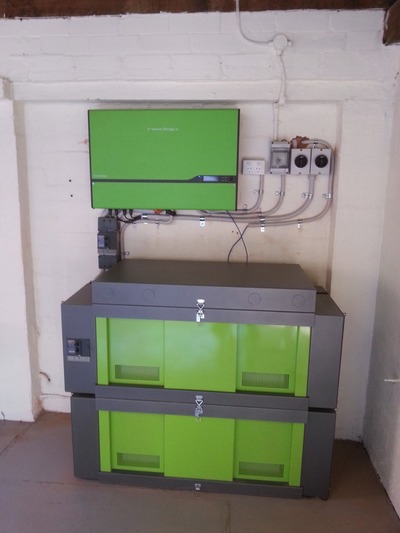Is going ‘off the grid’ easier than you think?
Friday, 14 September, 2012
It’s no secret that energy prices are on the rise, thanks largely to steeper network and distribution costs. These escalating costs are being passed on to Australian consumers, resulting in an increased interest in alternative energy supplies and ways to reduce reliance on the big energy providers - but how easy is it to ‘get off the grid’?
According to CBD Solar Manager Jeff Bye, Australians are now seeing solar energy as an increasingly viable alternative to complete grid connection. While Australia ranks 11th in the world on a per capita use of solar energy, it could be moving up the ranks as households in 2011 installed more rooftop solar than in Germany, the world’s solar leader.
Jeff believes that more people were looking for answers around how to ‘ditch the grid’ entirely and that it can be achieved through a combination of solar power and energy storage. “If people install solar panels and battery storage, they only need the grid as a backup supply,” he says. “Improvements in technology, being driven by the auto industry, are leading to more efficient and effective battery storage which works well with what can be intermittent production of electricity from solar power.”
Contrary to the direction of electricity prices, the cost of batteries and solar panels is decreasing, as new technology advances and lower materials cost are leading to cheaper and more effective energy solutions.
According to CBD Solar, the average cost of energy is now between 20 and 30 cents a kilowatt hour, reaching 43 cents at peak. By comparison, solar energy is costing between 5 and 7 cents a kilowatt hour to produce, with this level acceptable over the lifetime of a solar system of around 25 years.
Not one to merely spout statistics, Bye installed a solar system in his family home, along with battery backup. The roof has 18 solar panels, sourced from Germany and producing an average of 16 kWh per day, which virtually matches total daily consumption of the house. The batteries store solar power generated during the day for re-use on demand at any time.

Bye said the plan with his solar system and batteries was to receive a quarterly bill recording zero kWh consumption, with the only payment being for a network access charge which was about 50 cents a day.
“This system will pay for itself in around five years and after that we will have free electricity, despite the effect of the carbon tax and all other costs from electricity distribution through poles and wires,” Bye said.
A five-year payback with a promise of free electricity in the future certainly makes getting off the grid an attractive, and viable, proposition.
What Australia thinks about the energy transition
A CSIRO survey has canvassed more than 6700 people in all states and territories, across capital...
NZ has reached the 'electrification tipping point' — where to now?
New Zealand is one the of the first countries in the world where electric appliances and vehicles...
Finding one faulty solar panel in a sea of millions
Up until now, finding faults in individual panels on a solar farm has been a time-consuming and...







